Pirate shipwreck treasure coins


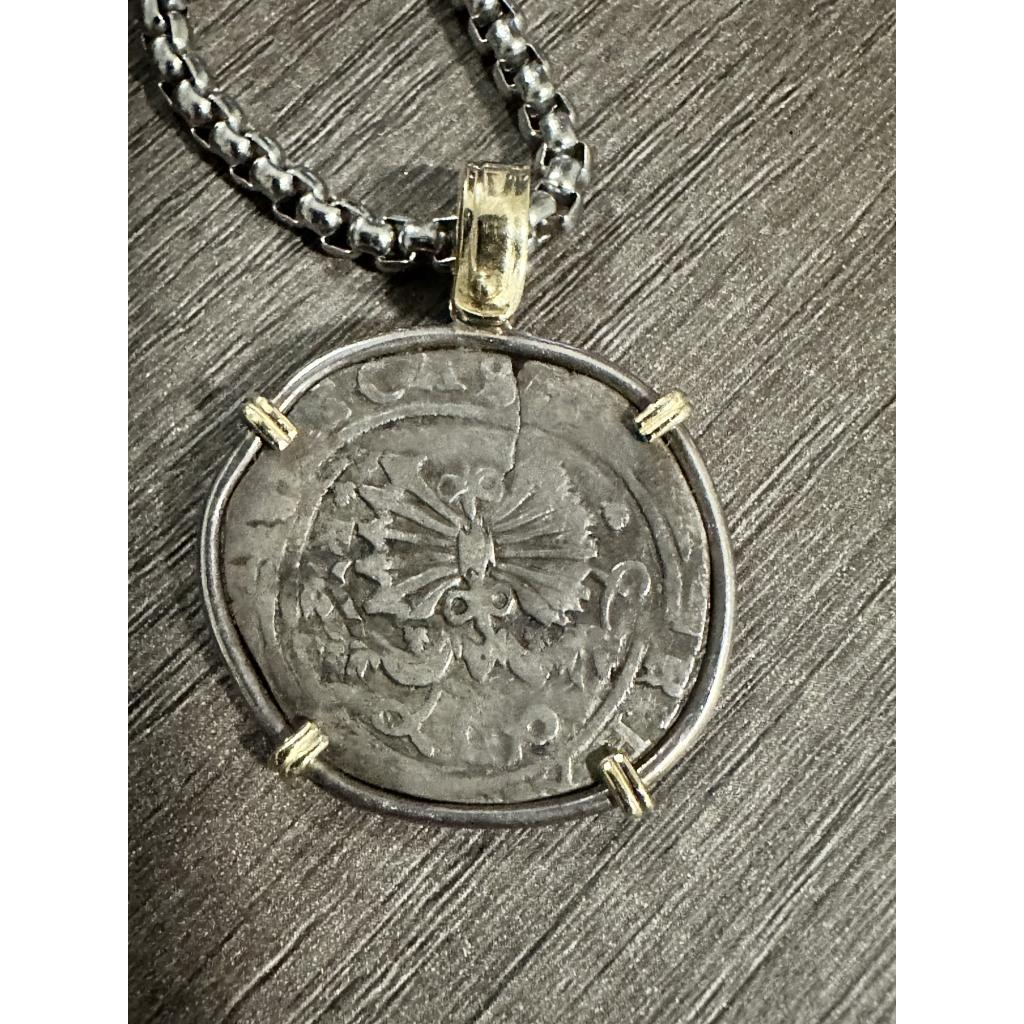
The 17th century was a time of great maritime adventure and intrigue, with Spanish pirate coins playing a central role in the tales of shipwrecks, pirates, and lost treasures. These coins, minted in the Spanish colonies of the New World, hold within them stories of daring buccaneers, ill-fated ships, and vast riches lost to the depths of the ocean. Let’s embark on a journey to uncover the secrets of Spanish pirate coins from this fascinating era.

The Age of Piracy:
The 17th century was known as the “Golden Age of Piracy,” a time when pirates roamed the seas in search of plunder and adventure. These daring adventurers, often portrayed as swashbuckling rogues, preyed upon merchant vessels, treasure fleets, and even naval warships, striking fear into the hearts of sailors and merchants alike.
Spanish Treasure Fleets and Shipwrecks:
Central to the tales of Spanish pirate coins are the legendary treasure fleets that sailed from the New World to Spain, laden with gold, silver, and other precious commodities. These fleets, known as the Flota de Indias (Indies Fleet) and the Galeones de Manila (Manila Galleons), were prime targets for pirates seeking to intercept their valuable cargoes.

However, the treacherous waters of the Atlantic Ocean posed numerous hazards to these treasure-laden vessels. Storms, reefs, and navigational errors often led to tragic shipwrecks, scattering vast fortunes across the ocean floor. Among the most infamous of these wrecks are the Nuestra Señora de Atocha and the Santa Margarita, which sank off the coast of Florida in 1622 during a hurricane, and the Spanish Plate Fleet, which met a similar fate in 1715.
Spanish Pirate Coins:
At the heart of these sunken treasures are Spanish pirate coins, also known as “pieces of eight” or Spanish reales. Minted in the Spanish colonies of the New World, these coins served as the primary currency for trade and commerce within the Spanish Empire and beyond.
Spanish pirate coins were prized by pirates and privateers for their intrinsic value and widespread acceptance in trade. They were minted in various denominations, including the eight-real, four-real, two-real, and one-real coins, with each denomination representing fractions of a Spanish dollar.

Pirates of the Caribbean:
The Caribbean Sea was a hotbed of piracy during the 17th century, with notorious pirates such as Blackbeard, Captain Kidd, and Anne Bonny terrorizing the shipping lanes and coastal settlements of the region. These pirates, often operating from hidden coves and bases, targeted Spanish treasure fleets, port towns, and unsuspecting merchant vessels in search of riches.
Pirate crews were made up of a diverse mix of adventurers, including former sailors, escaped slaves, and disgruntled seamen. They lived a rough and lawless existence, governed by their own code of conduct and camaraderie.
Treasure Hunting and Salvage Operations:
In the centuries following the age of piracy, treasure hunters and salvage operations have sought to recover the lost riches of Spanish shipwrecks. Using advanced technology and diving techniques, these explorers have uncovered sunken galleons, treasure chests, and hoards of Spanish pirate coins from the ocean depths.
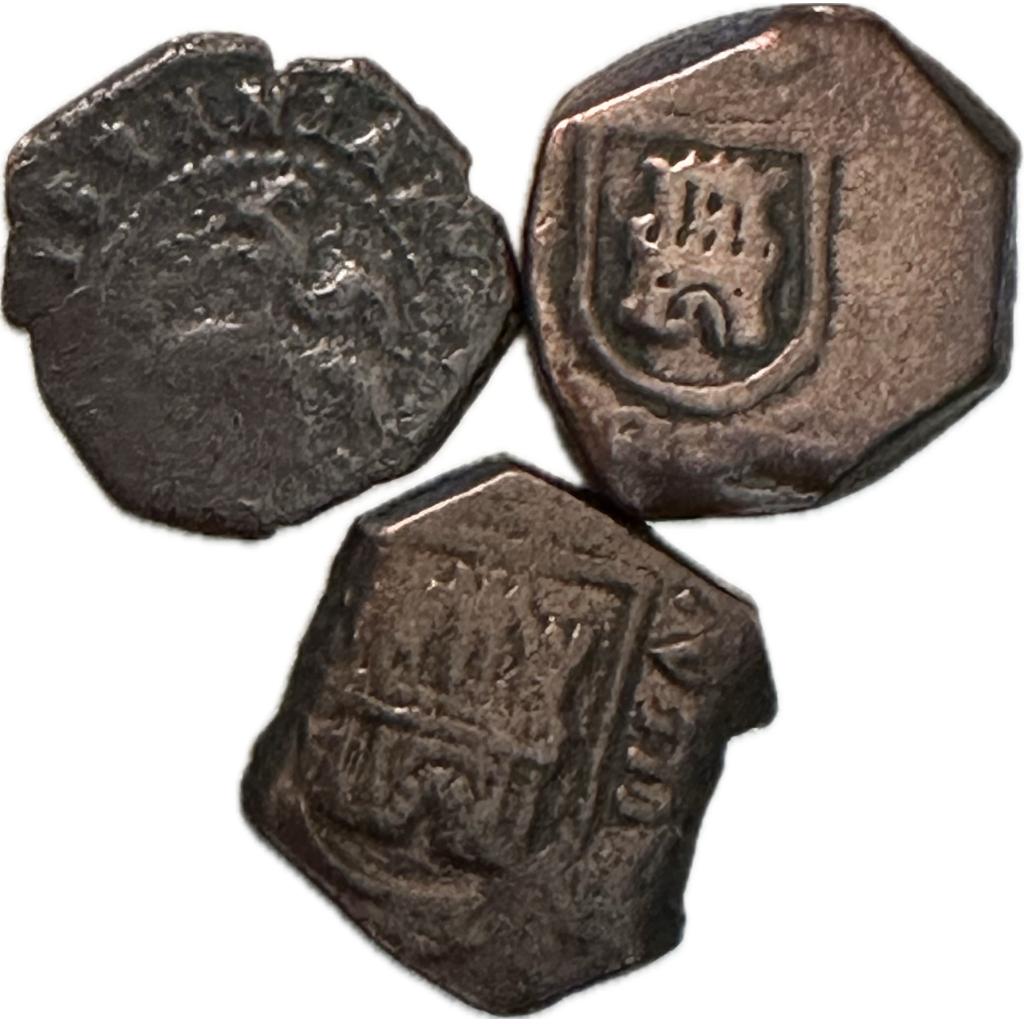
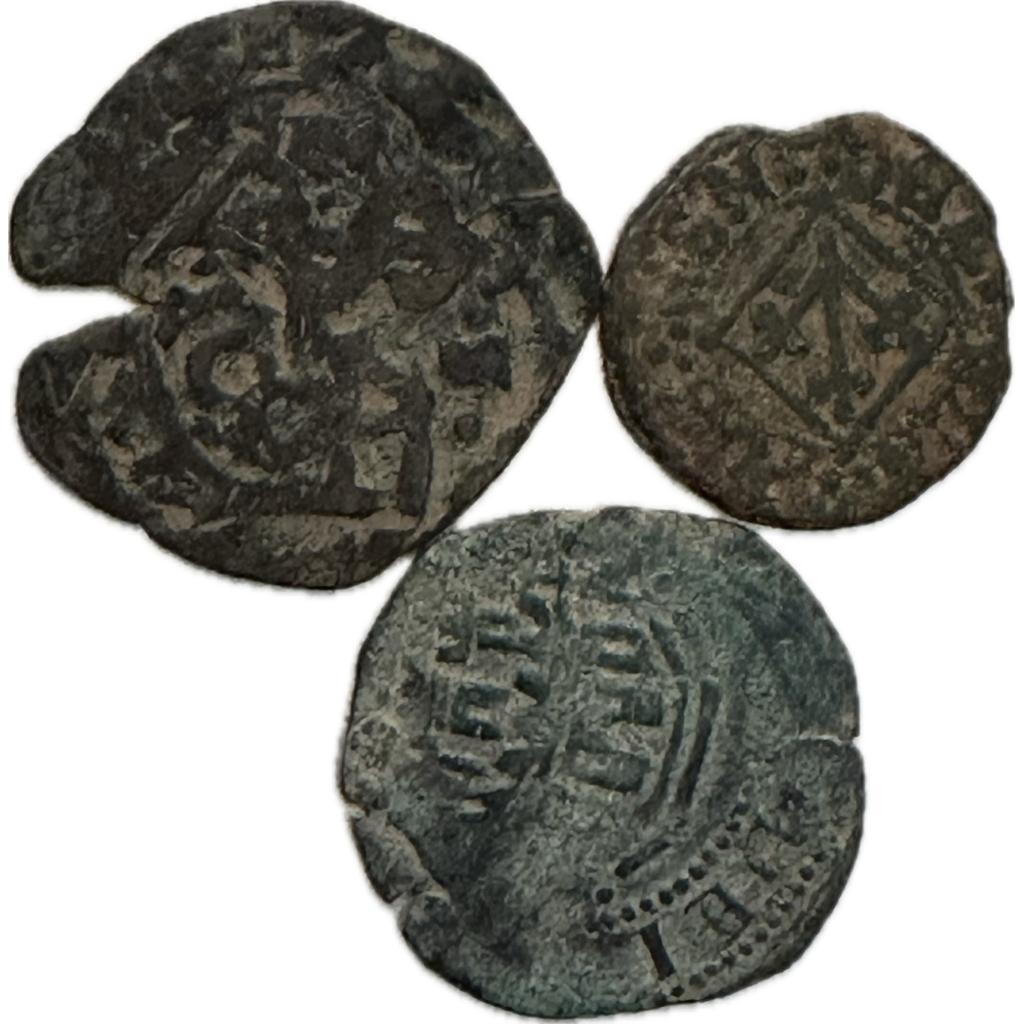
One of the most famous treasure hunters was Mel Fisher, who discovered the wreck of the Nuestra Señora de Atocha off the coast of Florida in 1985. The Atocha’s cargo, which included gold, silver, and jewels, provided a glimpse into the opulent riches of Spanish colonial life.
The Legacy of Spanish Pirate Coins:
Spanish pirate coins from the 17th century hold a special place in maritime history, symbolizing the daring exploits of pirates and the riches of the Spanish Empire. They are tangible artifacts that connect us to a bygone era of adventure and exploration, preserving the stories of those who sailed the high seas in search of fortune and glory.
Today, Spanish pirate coins continue to captivate collectors, historians, and enthusiasts around the world. Each coin is a window into the past, offering insights into the lives of pirates, sailors, and merchants who shaped the course of history during the age of piracy. As such, they remain enduring symbols of adventure, romance, and the enduring allure of buried treasure.
Copper Cobs:
In the vast expanse of Spanish colonial history, the 17th century stands as a period marked by exploration, conquest, and the establishment of vast empires across the Americas. Amidst the bustling trade networks and the flow of precious metals, copper cob coins emerged as a crucial component of Spain’s colonial economy.
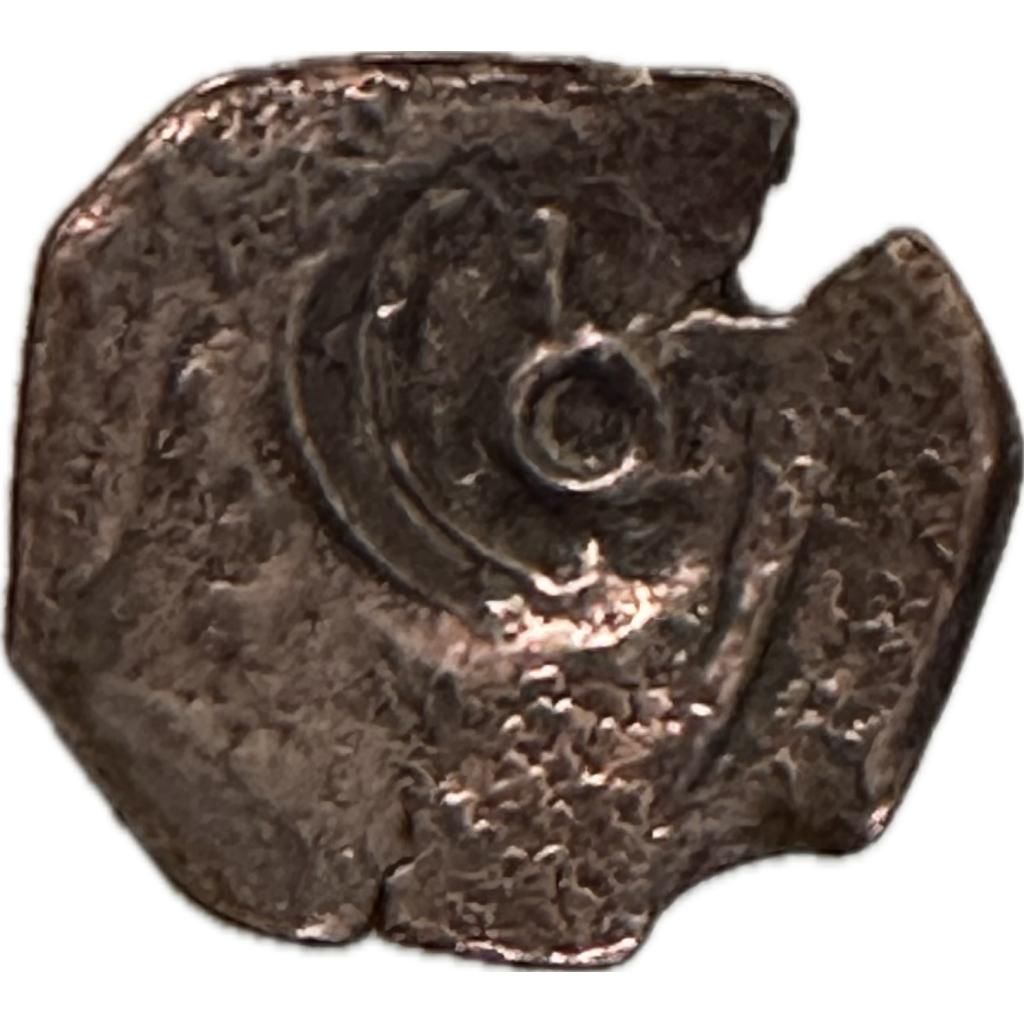
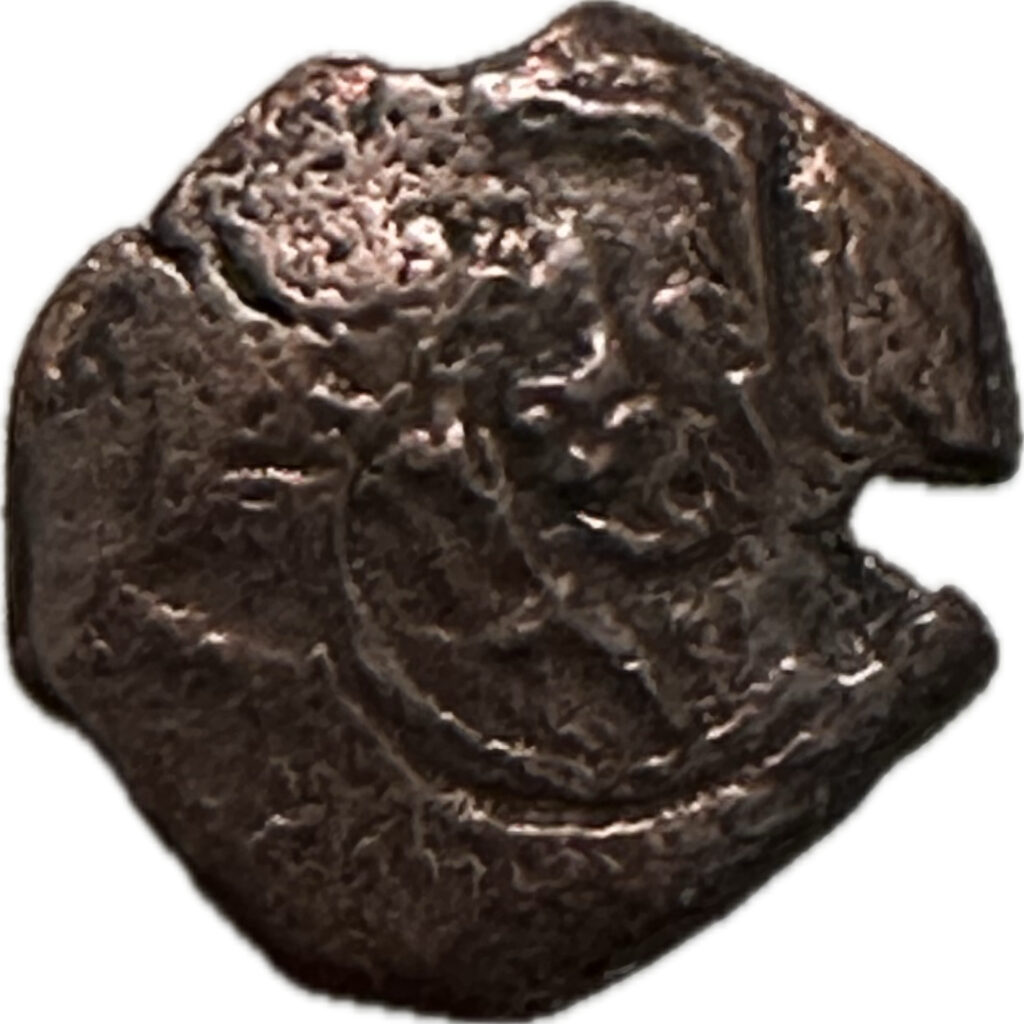
Origin and Production:
Copper cob coins, like their silver counterparts, were minted in various Spanish colonial mints scattered across the New World. These mints, located in regions such as Mexico, Peru, and Colombia, were tasked with producing coins to facilitate local commerce and trade within the empire.
The production process of copper cobs followed a similar method to that of silver cobs, albeit with less valuable metal. Chunks of copper were cut from bars and then stamped with the official marks of the mint, resulting in irregularly shaped coins with varying weights and sizes. Despite their crude appearance, these coins served as vital instruments of exchange in daily transactions within the Spanish colonies.
Denominations and Usage:
Copper cobs were typically minted in fractional denominations, serving as a lower-value currency for everyday transactions. These denominations varied depending on the specific needs of each region, with coins ranging from small fractions of a real to larger denominations.
Due to their lower intrinsic value compared to silver coins, copper cobs were primarily used for small purchases, such as food, clothing, and other essentials. They circulated alongside silver coins, providing flexibility in transactions and catering to a wide range of economic needs within Spanish colonial society.
Design and Characteristics:
Copper cobs bore similar design elements to their silver counterparts, albeit with some variations. The obverse side often featured the coat of arms of the Spanish crown, along with the denomination and mint mark indicating the origin of the coin. The reverse side typically displayed the Pillars of Hercules, a symbol of Spain’s maritime power, along with additional inscriptions or decorative elements.

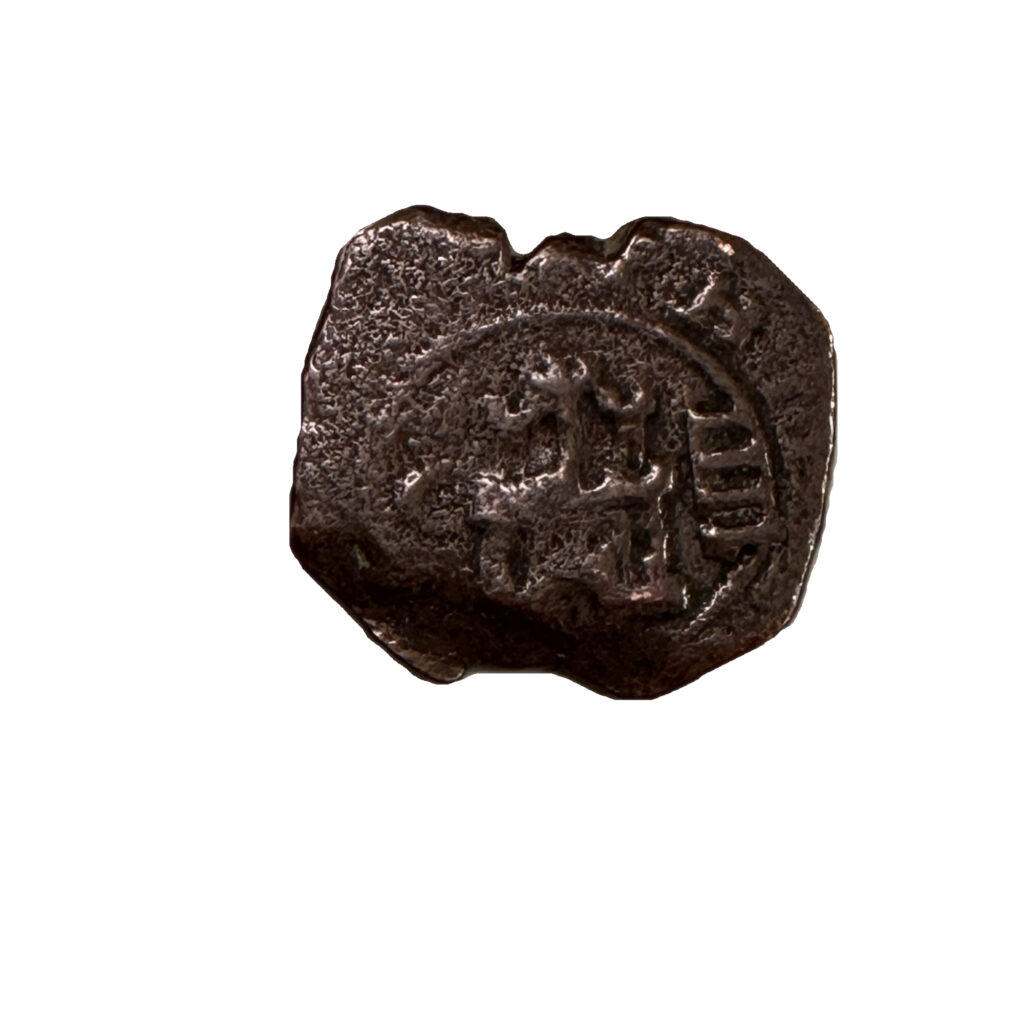

Unlike modern coins, copper cobs lacked uniformity in their shape and appearance. They were irregularly shaped, with rough edges and crude stampings, reflecting the primitive minting techniques of the time. Each coin was unique, with variations in size, weight, and design, making them challenging to counterfeit.
Significance and Legacy:
Despite their humble appearance, copper cobs played a vital role in sustaining the colonial economy and facilitating trade within the Spanish Empire. They provided a means of exchange for merchants, traders, and everyday citizens, enabling the smooth flow of goods and services across vast distances.
Moreover, copper cobs offer valuable insights into the economic and social dynamics of 17th-century Spanish America. Their widespread circulation and usage reflect the interconnectedness of colonial society, where a diverse array of currencies coexisted to meet the needs of a growing population and expanding economy.
Bronze Cobs:
During the 17th century, the Spanish Empire was at its zenith, with vast colonial holdings across the Americas, Asia, and beyond. Amidst the bustling trade networks and maritime endeavors, bronze cobs emerged as a lesser-known but significant form of currency minted and circulated within the Spanish colonies. These coins, often overlooked in favor of their silver counterparts, played a crucial role in facilitating commerce and trade in the New World.

Origin and Production:
Bronze cobs were minted in various Spanish colonial mints during the 1600s, primarily in regions such as Mexico, Peru, and Colombia. The production process of bronze cobs followed a method similar to that of copper and silver cobs, albeit with different compositions of metal.
Bronze, an alloy primarily composed of copper and tin, was used in the minting of these coins. Chunks of bronze were cut from bars and then stamped with the official marks of the mint, resulting in irregularly shaped coins with varying weights and sizes. This production method, while crude by modern standards, was sufficient for the needs of colonial economies at the time.
Denominations and Usage:
Bronze cobs were typically minted in fractional denominations, serving as a lower-value currency for everyday transactions within the Spanish colonies. These denominations varied depending on the specific needs of each region, with coins ranging from small fractions of a real to larger denominations.
Due to their lower intrinsic value compared to silver coins, bronze cobs were primarily used for small purchases and transactions of lesser value. They circulated alongside other forms of currency, including silver and copper cobs, providing flexibility in transactions and catering to a wide range of economic needs within Spanish colonial society.
Design and Characteristics:
Bronze cobs bore similar design elements to their copper and silver counterparts, albeit with some variations. The obverse side often featured the coat of arms of the Spanish crown, along with the denomination and mint mark indicating the origin of the coin. The reverse side typically displayed the Pillars of Hercules or other symbolic motifs, along with additional inscriptions or decorative elements.
Like copper and silver cobs, bronze cobs lacked uniformity in their shape and appearance. They were irregularly shaped, with rough edges and crude stampings, reflecting the primitive minting techniques of the time. Each coin was unique, with variations in size, weight, and design, making them difficult to counterfeit.
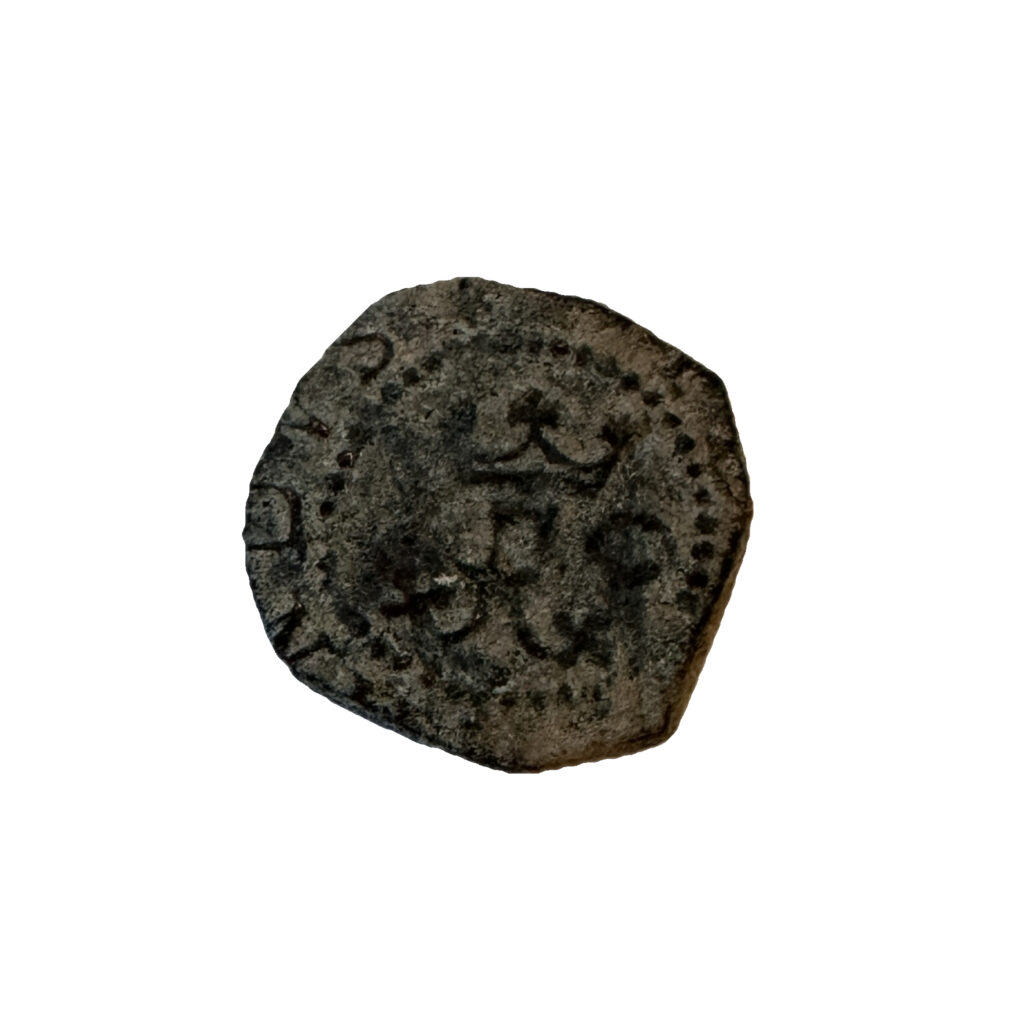

Despite their modest appearance, bronze cobs played a vital role in sustaining the colonial economy and facilitating trade within the Spanish Empire. They provided a means of exchange for merchants, traders, and everyday citizens, enabling the smooth flow of goods and services across vast distances.
Moreover, bronze cobs offer valuable insights into the economic and social dynamics of 17th-century Spanish America. Their widespread circulation and usage reflect the interconnectedness of colonial society, where a diverse array of currencies coexisted to meet the needs of a growing population and expanding economy.
Silver Cobs:
the 17th century stands out as a golden age of piracy and maritime conflict. Amidst the swashbuckling tales of buccaneers and privateers, silver treasure pirate coins emerged as iconic symbols of plunder and adventure. These coins, minted primarily in the Spanish colonies of the New World, played a central role in the shadowy world of piracy, smuggling, and treasure hunting that characterized the era.
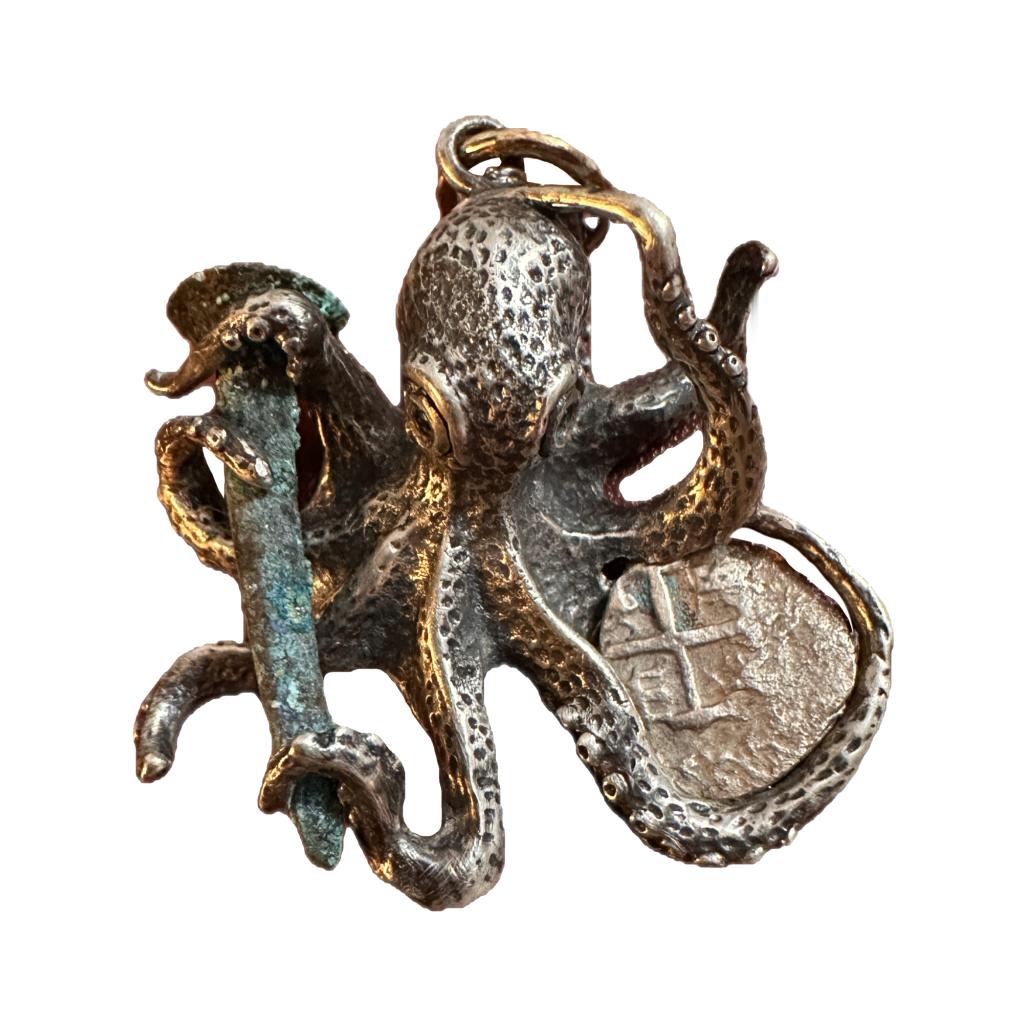


Silver treasure pirate coins, often referred to as “pieces of eight” or Spanish reales, trace their origins to the vast silver mines of Spanish America, particularly in regions such as Mexico, Peru, and Bolivia. The Spanish crown minted vast quantities of silver coins to finance its imperial ambitions and maintain control over its far-flung colonies.
The production process of these coins involved casting molten silver into molds to create roughly circular planchets, which were then struck with dies to imprint designs and denominations. The resulting coins, known for their distinctive irregular shape and crude appearance, bore the hallmarks of Spanish sovereignty, including the coat of arms of the Spanish crown and the mint mark indicating their origin.
Shipwreck silver coins hold a unique place in maritime history, reflecting the economic and cultural exchanges of past centuries. Among the most common denominations recovered from shipwrecks are the 1/4, 1/2, 1, 2, 4, and 8 reale coins.
1/4 Reale:
The 1/4 reale coin, also known as a “four bits” or “quartilla,” was a small denomination of Spanish colonial currency.
These tiny coins typically weighed around 0.8 grams and measured about 14 millimeters in diameter.
Despite their small size, 1/4 reale coins were used in everyday transactions for small purchases.
Due to their low intrinsic value, they were often lost or discarded, making them relatively rare finds today.
The design of 1/4 reale coins typically featured the Spanish coat of arms on one side and a cross on the other.

1/2 Reale:
The 1/2 reale coin, commonly known as a “half real” or “medio real,” was another small denomination coin widely circulated during the colonial period.
These coins weighed approximately 1.6 grams and measured around 15 millimeters in diameter.
Like the 1/4 reale, 1/2 reale coins were used for small transactions in daily commerce.
They were often cut into smaller pieces, known as “cut pieces of eight,” to make change for smaller purchases.
The design of 1/2 reale coins typically featured the Spanish coat of arms on one side and a numeral indicating the denomination on the other.

1 Reale:
The 1 reale coin, also called a “real” or “piece of eight,” was one of the most widely circulated coins in the Spanish colonial monetary system.
Weighing approximately 3.4 grams and measuring about 20 millimeters in diameter, these coins were of moderate size and value.
The term “piece of eight” refers to the practice of dividing larger denomination coins, such as the 8 reale, into smaller pieces for smaller transactions.
The design of 1 reale coins typically featured the Spanish coat of arms on one side and the Pillars of Hercules (representing the Strait of Gibraltar) on the other.

2 Reale:
The 2 reale coin, also known as a “two-real” or “dos reales,” was a common denomination in the Spanish colonial monetary system. These coins weighed approximately 6.8 grams and measured around 25 millimeters in diameter. 2 reale coins were valued higher than smaller denominations like the 1/4 and 1/2 reale but lower than the 4 and 8 reale coins. They were used for various transactions, from everyday purchases to larger trade dealings. The design of 2 reale coins typically featured the Spanish coat of arms on one side and a cross on the other, similar to other denominations in the colonial currency system. Including the 2 reale denomination provides a more comprehensive understanding of the range of coins commonly found among shipwreck treasures, highlighting their significance in both local and international commerce during the colonial period.
4 Reale:
The 4 reale coin, known as a “four-real” or “four bits,” was a medium-sized denomination in the Spanish colonial monetary system.
These coins weighed around 13.5 grams and measured approximately 29 millimeters in diameter.
4 reale coins were valued higher than smaller denominations and were commonly used for larger transactions in both domestic and international trade.
The design of 4 reale coins usually featured the Spanish coat of arms on one side and a cross on the other, though variations existed.


8 Reale:
The 8 reale coin, often referred to as a “piece of eight” or “Spanish dollar,” was the cornerstone of the Spanish colonial monetary system.
Weighing approximately 27 grams and measuring about 38 millimeters in diameter, these large silver coins were highly valued.
8 reale coins were widely accepted and circulated not only in Spanish territories but also in trade networks around the world.
The design of 8 reale coins typically featured the Spanish coat of arms on one side and the Pillars of Hercules on the other, with the denomination expressed as “8R.”
Shipwreck silver coins, regardless of denomination, provide valuable insights into the economic and maritime history of the colonial era. Recovered from the depths of the ocean, these coins serve as tangible artifacts connecting us to the past and the global networks of trade and commerce that once spanned the seas.


Denominations and Usage:
Silver treasure pirate coins were minted in various denominations to facilitate trade within the Spanish Empire and beyond. The most common denominations included the eight-real, four-real, two-real, and one-real coins, with each denomination representing fractions of a Spanish dollar.
These coins served as the primary currency for commerce, trade, and transactions within the Spanish colonies, circulating alongside other forms of currency such as gold doubloons and copper cobs. The widespread use of Spanish reales facilitated economic activity across vast distances, from bustling ports to remote outposts in the New World.
Design and Characteristics:
Silver treasure pirate coins were renowned for their distinctive design elements and characteristics. The obverse side typically featured the coat of arms of the Spanish crown, surrounded by inscriptions denoting the denomination, mint mark, and assayer’s mark. The reverse side often displayed the Pillars of Hercules, symbolizing Spain’s maritime dominance, along with additional decorative motifs and inscriptions.
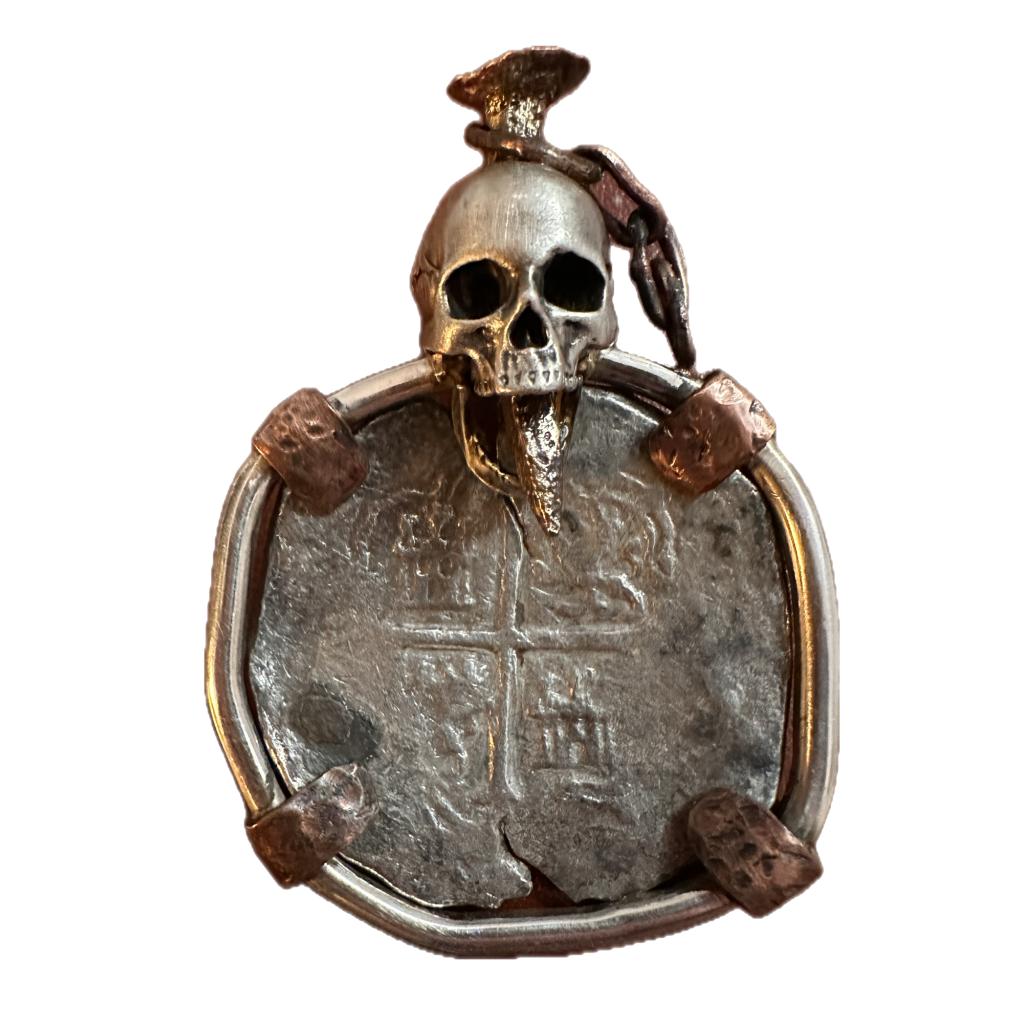
Despite their uniformity in design, silver reales varied in appearance due to differences in minting techniques and the wear and tear of circulation. Many coins exhibited irregular shapes, rough edges, and crude stampings, reflecting the primitive minting methods of the time. Each coin bore the unique marks of its journey through history, from the minting press to the hands of merchants, sailors, and pirates.
Significance and Legacy:
Silver treasure pirate coins hold a special place in the annals of maritime history, representing the intersection of commerce, conflict, and adventure during the 17th century. These coins were prized by pirates and privateers for their intrinsic value and widespread acceptance in trade, making them sought-after spoils of piracy and smuggling.
The legacy of silver reales extends beyond their use as currency; they are tangible artifacts that tell stories of exploration, conquest, and exploitation in the New World. Through their study and preservation, historians gain insights into the economic, social, and cultural dynamics of Spanish America during this transformative period.


Today, silver treasure pirate coins continue to capture the imagination of collectors, historians, and enthusiasts worldwide. Each coin serves as a tangible link to the past, preserving the stories of those who sailed the high seas in search of fortune and adventure. As such, they remain enduring symbols of the age of piracy and the enduring allure of maritime treasure.
